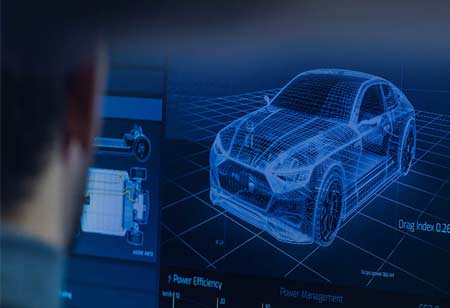THANK YOU FOR SUBSCRIBING
THANK YOU FOR SUBSCRIBING
Be first to read the latest tech news, Industry Leader's Insights, and CIO interviews of medium and large enterprises exclusively from Auto Tech Outlook

By
Auto Tech Outlook | Monday, November 06, 2023
Stay ahead of the industry with exclusive feature stories on the top companies, expert insights and the latest news delivered straight to your inbox. Subscribe today.
This article offers a comprehensive exploration of the benefits of integrating the Internet of Things (IoT) into the automotive industry.
Fremont, CA: The integration of computer processors and sensors into various products, from household appliances to fitness equipment, has become a ubiquitous phenomenon. However, it is industries like automotive manufacturing that are at the forefront of the transformative wave known as the Internet of Things (IoT).
Connected cars, a notable product of this IoT revolution, establish communication channels with external systems through the internet. These systems encompass a range of applications, from enabling remote car unlocking and GPS tracking to facilitating vehicle-to-vehicle communication. This article provides a comprehensive overview of the advantages offered by connected cars, shedding light on the transformative potential of IoT in the automotive sector.
Advantages of IoT in the Automotive Industry
There are several advantages of IoT in the automotive industry. Some of them include:
Predictive Maintenance:
Predictive maintenance is one of the big promises of automotive IoT. A network of computer chips and sensors installed throughout a connected car collect performance data, which is then analyzed in the cloud to forecast when a part will need maintenance long before it fails.
A driver in a connected world may even send a maintenance notice to the manufacturer or repair. The most complicated systems would incorporate AI to improve the predictive algorithm's predicting capabilities.
Predictive maintenance can help consumers save money by collecting data and adjusting auto settings to reduce wear and tear over time. It also saves money for dealerships and mechanics by enhancing inventory management with warnings about upcoming maintenance.
Making Parking Easier:
The average American driver spends 17 hours in one year hunting for parking. That amounts to a seventy-three billion yearly cost in lost time, fuel, and pollutants. Automotive IoT could help drivers save time and money on parking. The market has also realized the potential for connected automobiles to make parking easier.
Using mapping data to discover open parking places is possible thanks to firms like Otonomo, which uploads car data to the cloud and analyzes it for parking, traffic, and other purposes. The organization, which focuses on urban transportation planning, provides a platform for city planners to measure parking availability and duration.
Infotainment:
Almost every new automobile manufactured nowadays has a screen in the dashboard's center - this is the vehicle's infotainment system. In-car entertainment, or infotainment, is another expanding aspect of the automotive IoT business.
Vehicle-specific infotainment systems are one type of infotainment system. Speech-activated navigation, messaging, and phone calls are just a few of the many advantages of infotainment for drivers. Connecting cars and infotainment systems go hand in hand, as infotainment systems cannot function without IoT connectivity.
Traffic Prediction:
At best, traffic is a nuisance. At worst, it serves as a breeding ground for collisions. A rising number of IoT sensors in CCTV cameras and along highways and bridges collect data in real-time to reduce traffic congestion and identify potential bottlenecks before they occur. Public safety organizations and IoT companies nationwide have joined forces to achieve this goal more efficiently.
Connected cars can exchange information with one another, and automobiles with IoT capabilities can predict and report traffic trends using signal phase and timing information. Traffic prediction can help drivers move more effectively and safely on the road.
The prediction will likely become more precise as more signal phase and timing data are accessible via connected cars. Autonomous vehicles are also helping to improve traffic patterns and vehicle connectivity.
These are some of the features and benefits of IoT in connected cars. IoT in vehicles can bring about revolutionary changes in the automotive industry itself.
 Copyright © 2025 AutoTech Outlook. All Rights Reserved | Privacy Policy | Subscribe | Sitemap | About us | Feedback Policy | Editorial Policy
Copyright © 2025 AutoTech Outlook. All Rights Reserved | Privacy Policy | Subscribe | Sitemap | About us | Feedback Policy | Editorial Policy 
However, if you would like to share the information in this article, you may use the link below:
https://www.autotechoutlookapac.com/news/unveiling-the-advantages-of-connected-cars-nwid-1401.html




